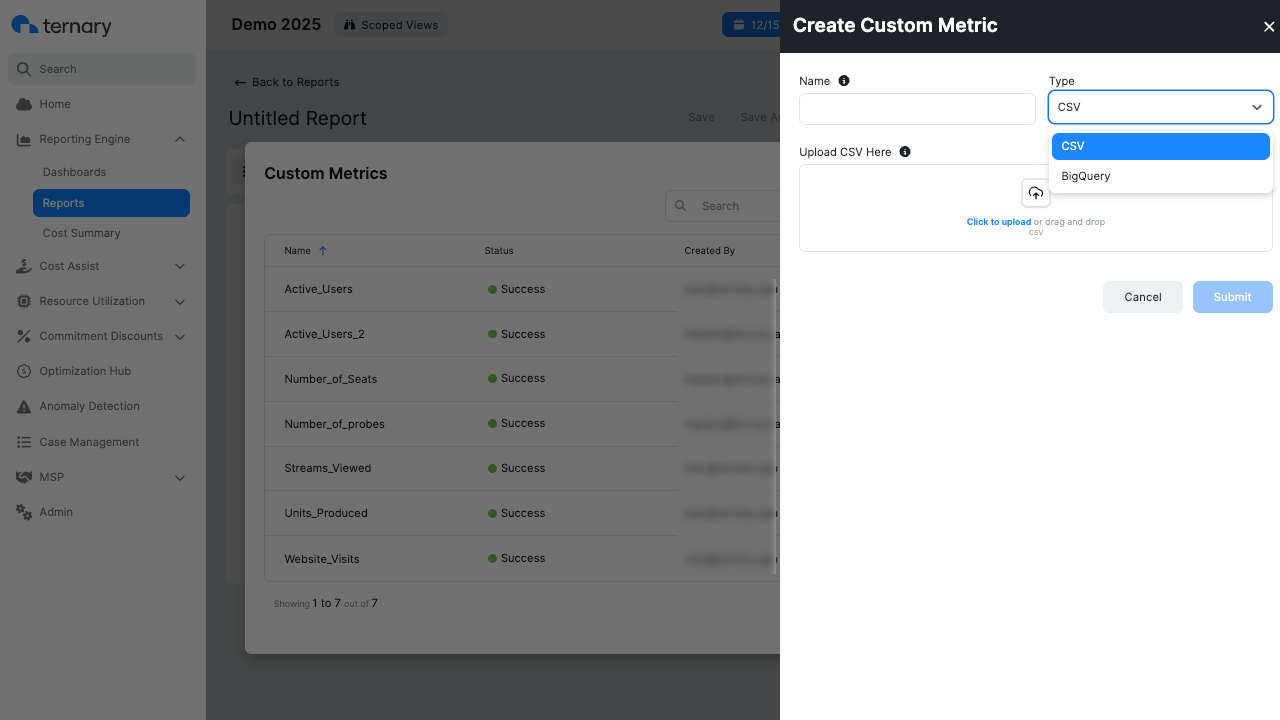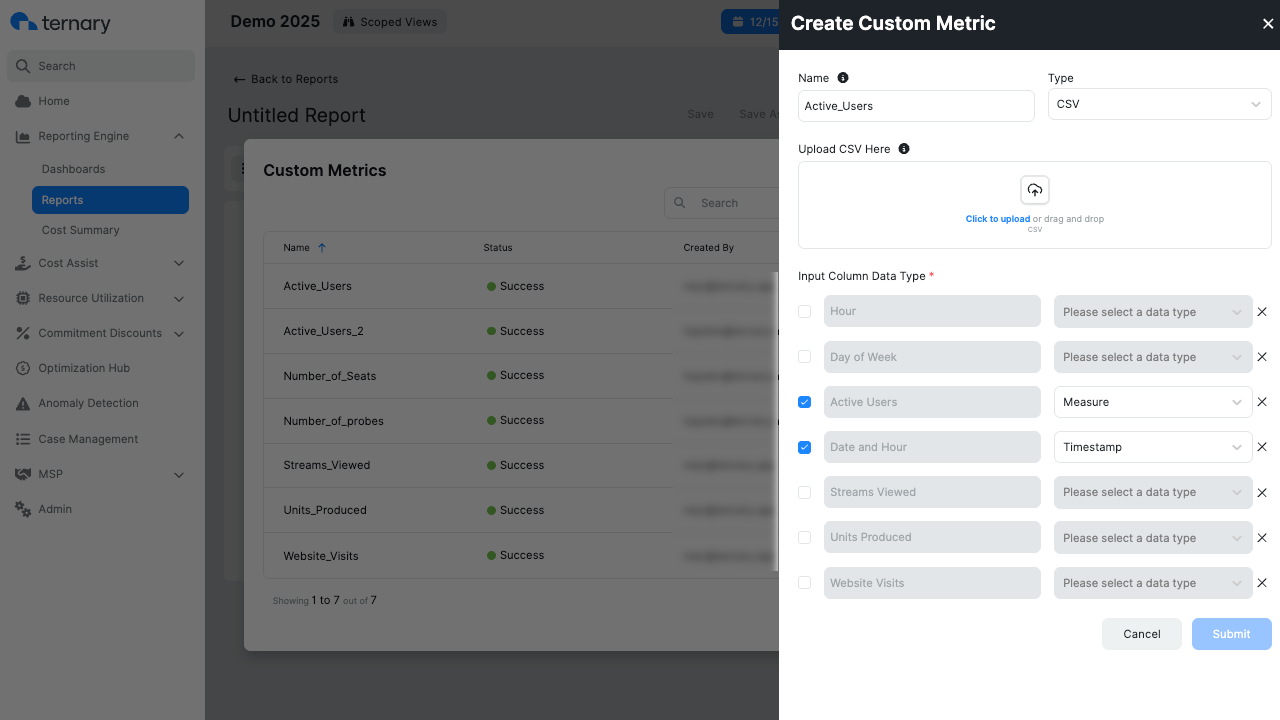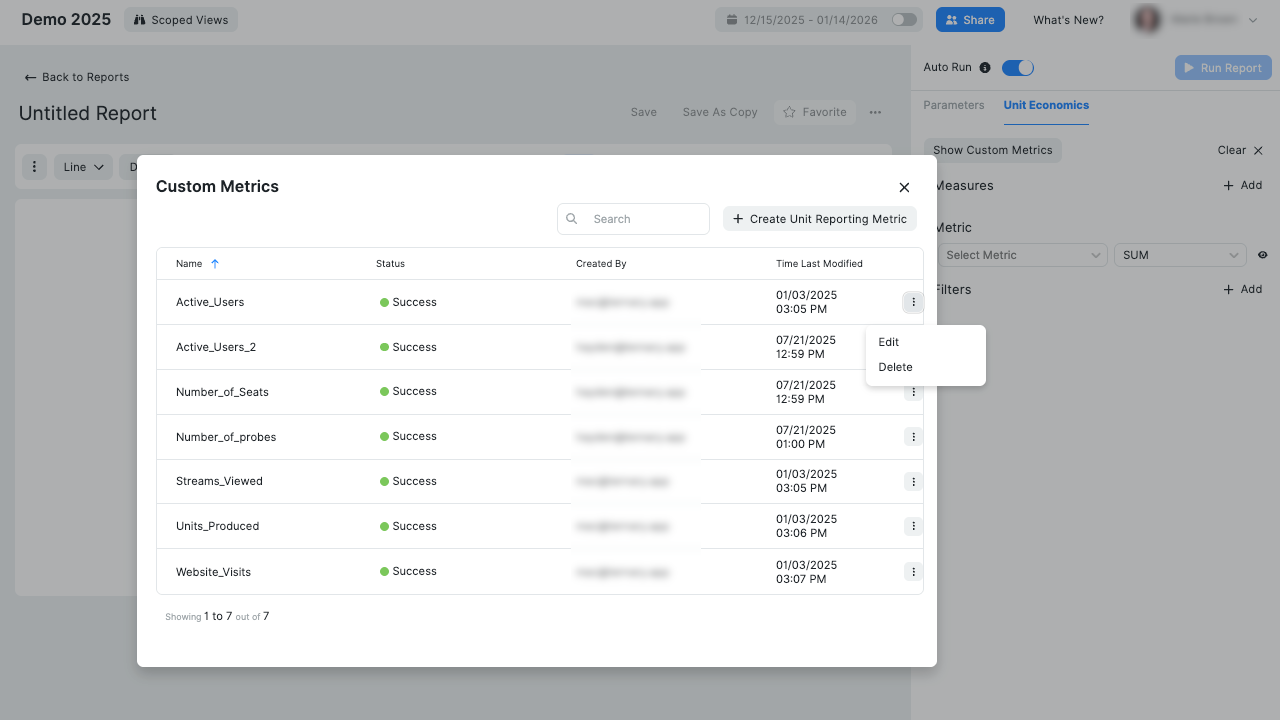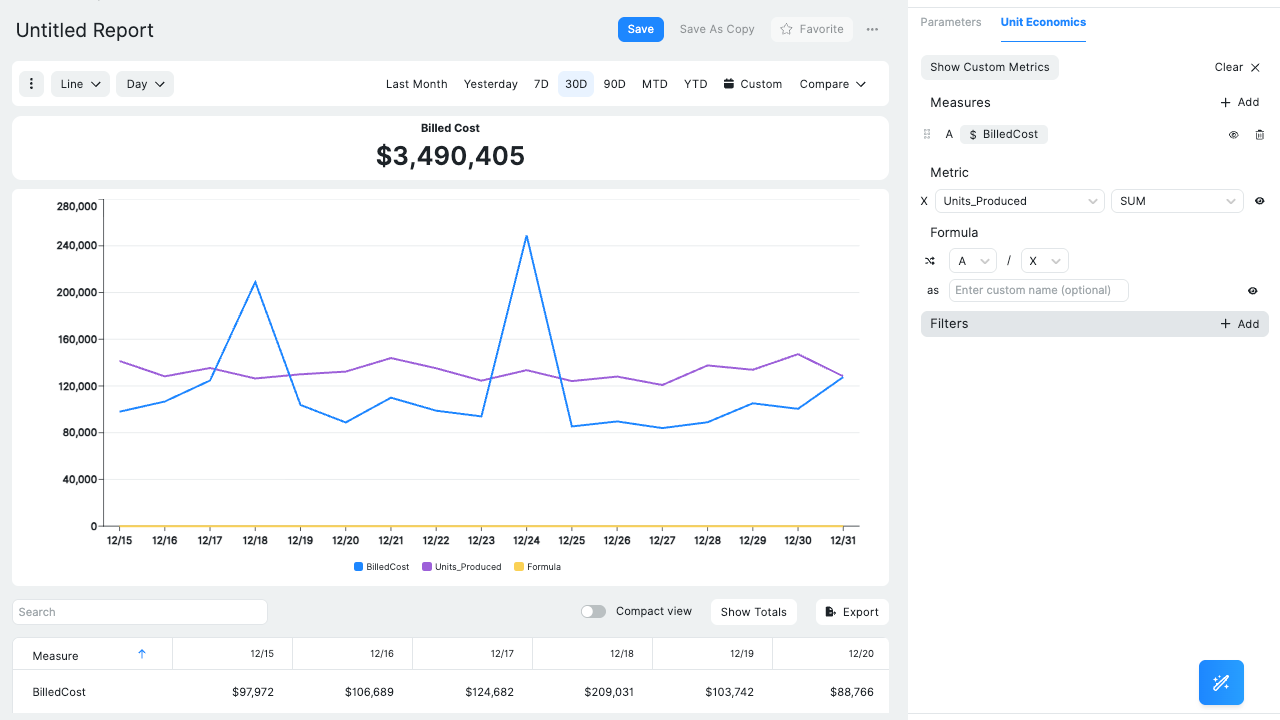Unit Economics Report
Ternary enables you to define and track unit metrics to assess the impact of cloud on your business.
Unit Economics in Ternary enables teams to measure how cloud costs scale relative to business activity by combining cloud cost data with time-series metrics. These metrics can be uploaded via CSV files, allowing external operational data to be analyzed alongside cost data.
By combining usage-based cost data with time-series measurements like users, requests, or transactions, Unit Economics supports analysis of business-relevant metrics such as cost per user, cost per transaction, or cost per unit delivered. This allows engineering, finance, and FinOps teams to evaluate efficiency, track unit-level trends, and understand the financial impact of growth.
How to create a Unit Economics report in Ternary
This section explains how to prepare time-series data, upload it into Ternary, and use it to build Unit Economics reports.
Step 1: Prepare a time-series CSV file
Unit Economics relies on time-series data that represents business activity, such as users, requests, or transactions.
A valid CSV file must include:
- One timestamp column
- One measure column
- Optional dimension columns
Only one measure can be defined per CSV file. But, there is no limit on the number of dimensions. Dimensions become available as filters when building Unit Economics reports.
Timestamp requirements
- Timestamps must follow RFC 3339 format. (e.g. "2006-01-02T15:04:05Z07:00")
- Either a Z suffix or a timezone offset can be used, but not both.
Valid examples:
2015-09-15T14:00:12-00:00
2015-09-15T14:00:13Z07:00Step 2: Upload time-series data into Ternary
Time-series data is uploaded from within the Reporting Engine.
- Navigate to Reporting Engine → Reports.
- Select Create a new report.

- Open the Unit Economics tab and select Show Custom Metrics.

- Click Create Unit Reporting Metric.
- Upload a CSV file or select a BigQuery table. If using BigQuery, the Ternary service account must have read access and the table schema must follow the same requirements as CSV uploads.

Step 3: Define measures and dimensions

- During upload, provide a name for the measure. This name will later be used as the numerator or denominator in Unit Economics formulas.
- Assign column roles:
- One column as Timestamp
- One column as Measure
- One or more columns as Dimensions (optional)
Dimensions are used to filter Unit Economics data during reporting. Custom metrics can also be created without dimensions.
Step 4: Submit
Click Submit to upload the file. The status refreshes automatically within a few minutes.
Once uploaded, the custom metric remains available and editable for future reports.

Step 5: Create a Unit Economics report
After the time-series metric is available, it can be combined with cloud cost data.

- In the Report Builder, open the Unit Economics tab.
- Select the required cloud cost measures. Each measure is assigned a letter designation.
- Select the uploaded Unit Economics metric.
- Build the formula using letter designations to define the numerator and denominator.
- Assign a name to the calculated metric.
- Apply filters using dimensions from the uploaded metric.
- Configure timeframe, granularity, and report format.
- Run the report.
- Name the report and save for later use.
The resulting report calculates unit-level metrics such as cost per transaction or cost per region by combining cloud spend with business activity data. These reports can be shared and added in other dashboards as required.
Updated 6 days ago
